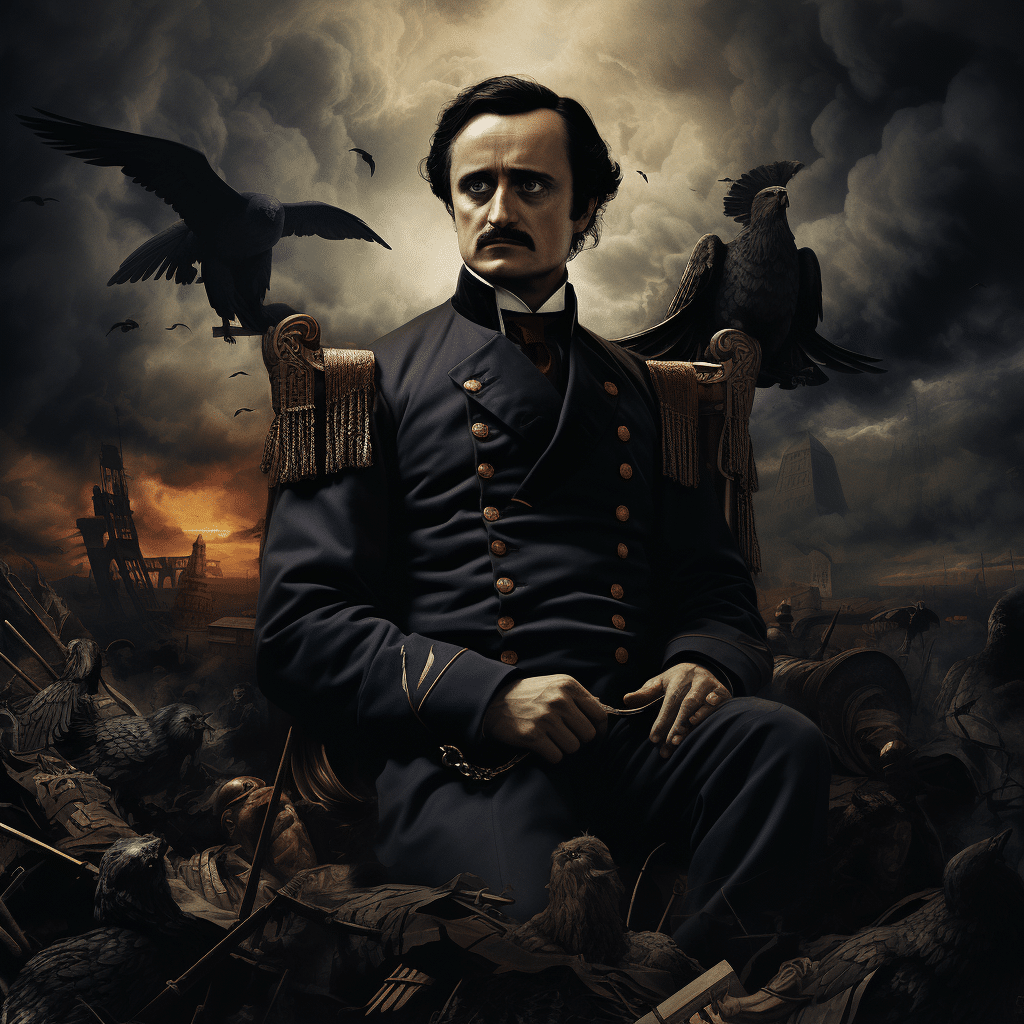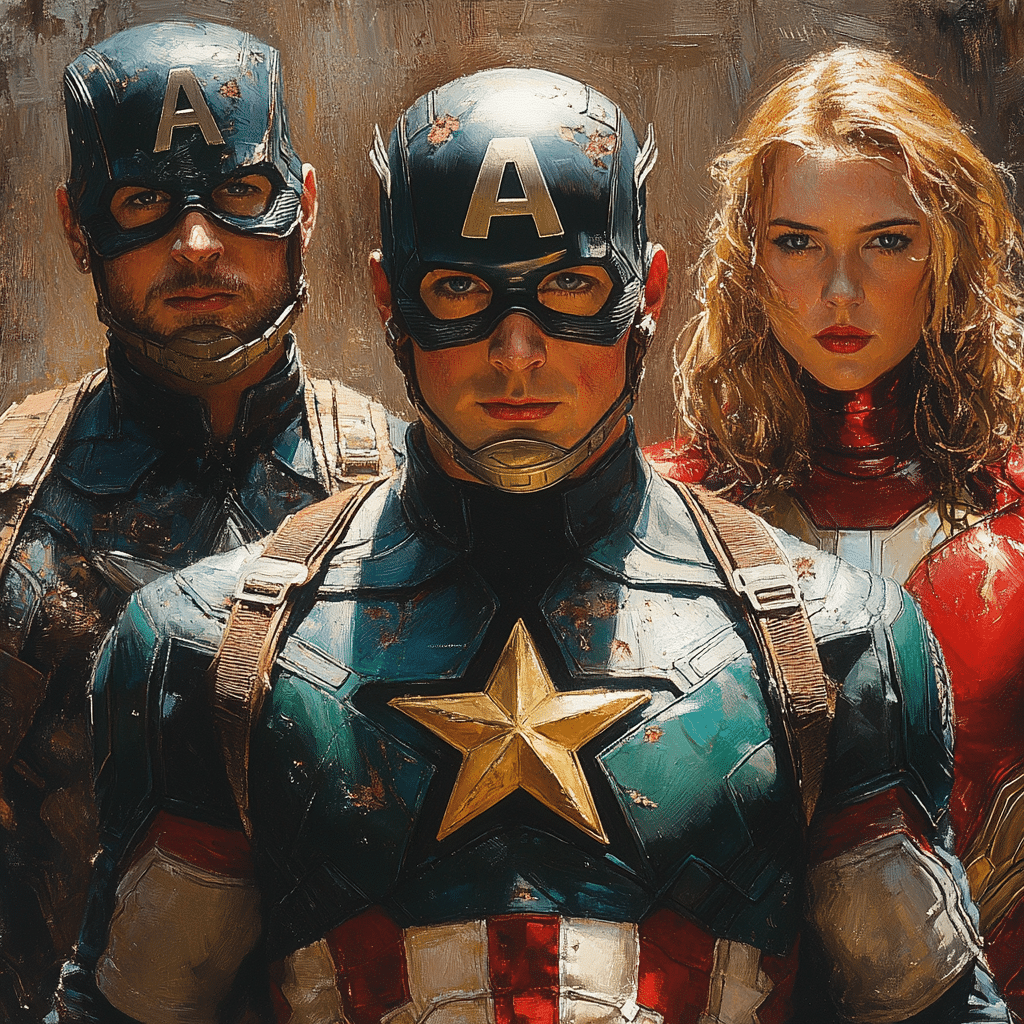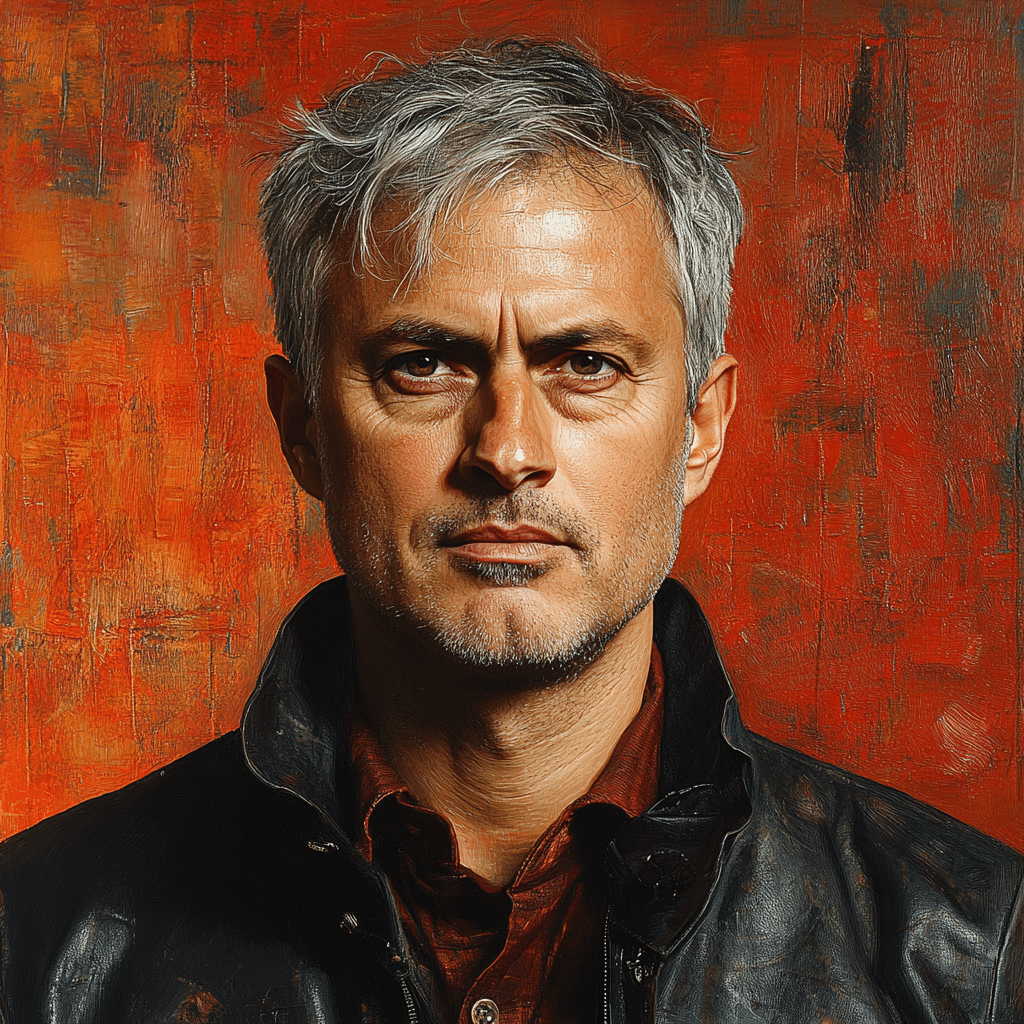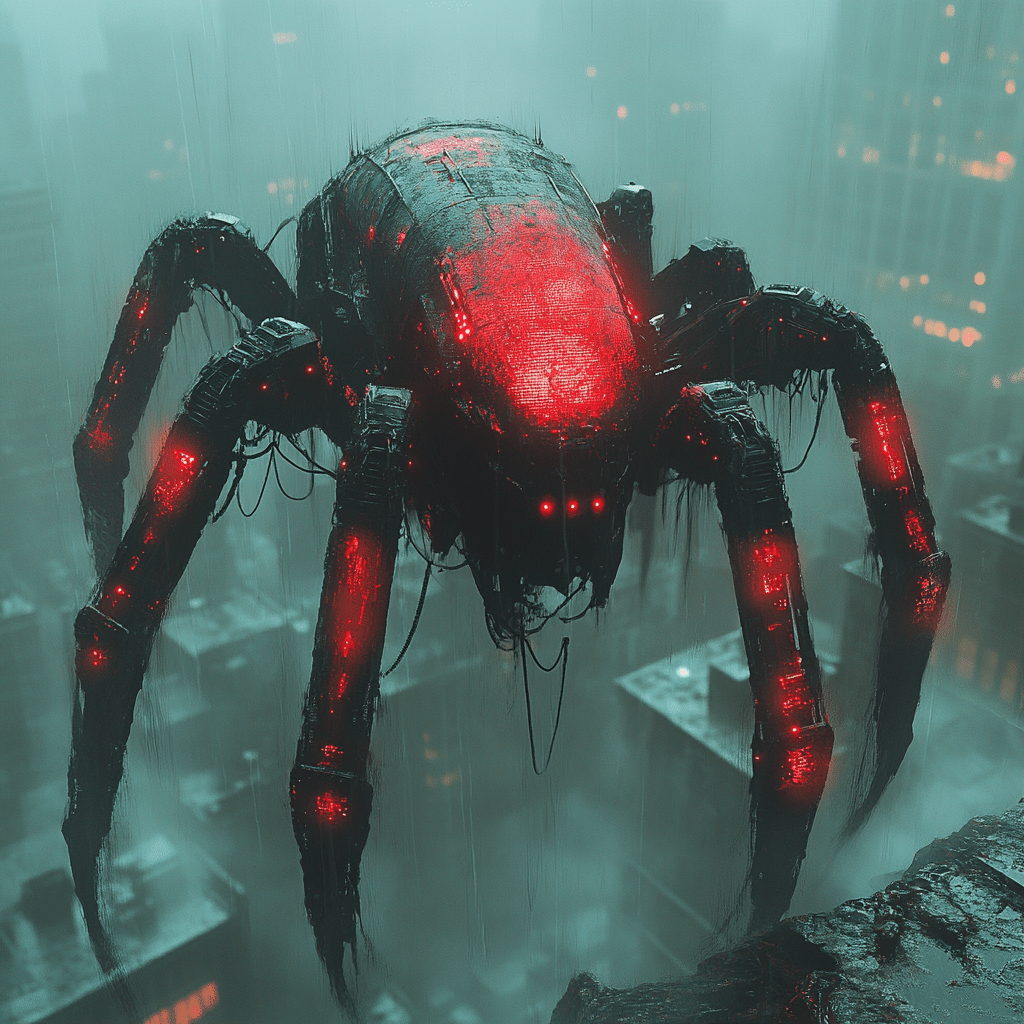When conjuring the image of Edgar Allan Poe, one might envision a somber figure cloaked in the shadows of his own macabre tales, not a young cadet in the crisp uniform of the United States Military Academy at West Point. Yet, the writer, celebrated for piercing the veil of the mysterious and the morose, has his own enigmatic chapter amidst the disciplined halls of the prestigious institution. Like a page torn from one of his tales, Edgar Allan Poe West Point experience remains a fascinating puzzle in the annals of American literary history—a conundrum that has both baffled and beguiled scholars and aficionados alike.
Edgar Allan Poe’s Mysterious Dismissal from West Point
Edgar Allan Poe enrolled in West Point in 1830, against a backdrop of personal strife and financial woe. His time there, though brief, was marred by a concoction of intrigue and disobedience that ultimately led to his dismissal. It’s been whispered, like a ghostly echo down the hallways of time, that the dark romantic engrained his legacy into the very stone of the academy’s stately architecture. But what really happened in those historic grounds that led to his court-martial?
The circumstances leading to his expulsion in 1831, surrounded by rumor and reticulation, were like a playbill for a drama that Poe himself might have penned. Reports suggest that before he was expelled for “gross neglect of duty” and “disobedience of orders,” the rebellious poet orchestrated a final act of defiance—scamming his peers out of a lump sum to self-publish his poetry. It’s a scenario that makes you tilt your head in thought, doesn’t it?
Poe’s legacy, woven with the golden strands of his prose, intersects with the military prowess of West Point, creating a tapestry rich in historical conundrum. And boy, a mystery it is! So let’s dive in, as Ms. Frizzle would say, and explore the world of Edgar Allan Poe at West Point with gusto.

A Closer Look at Edgar Allan Poe’s Military Career
A kind of curiosity bubbles up when we trace the footsteps of young Poe. Before the name Edgar Allan Poe echoed the halls of literary greatness, it was etched into the muster rolls of the academy as a testament to his lesser-known military path. His biographical sketch came with twists and turns, akin to the serpentine path of his own narratives.
Enlisting initially under the pseudonym Edgar A. Perry, arguably to sidestep potential punishment or perhaps, as some wryly speculate, to simply weave another layer of intrigue into his life story, Poe’s military career was as turbulent as his tales. He had a taste of army life before West Point, his stint in Boston revealing a man seeking direction—or was it escape?
Once at West Point, his academic life flickered with brilliance, like a candle in the wind, his intellect never in question. Yet, personal life squabbles and a resistance to authority had him dancing on the razor’s edge. Poe’s own account of his dismissal is cloaked in the same mystique as his fiction, leading us to wonder: Was his expulsion a calculated act, a willful step towards autonomy and literary pursuit, or simply the act of a fiery young man with a rebellious streak?
| Aspect | Details |
|---|---|
| Name | Edgar Allan Poe |
| Time at West Point | Brief period from 1830 to 1831 |
| Enrollment | Originally enrolled as a cadet |
| Reason for Leaving | Court-martialed and expelled for gross neglect of duty and disobedience of orders |
| Incident of Note | Solicited funds from classmates (approx. $170) to publish poetry |
| Before West Point | Enlisted in the army under the name Edgar A. Perry |
| Reason for Alias | Fear of ending up in jail |
| Life After West Point | Moved to Boston, pursued writing career |
| Affiliation with “The Pale Blue Eye” | Basis for a character in the fictional narrative |
| Misconceptions | The Pale Blue Eye is fiction, not a true story of Poe’s life |
| Fiction vs Reality | Poe’s attendance is factual, but the novel’s plot is invented |
| Cultural Impact | Poe’s experience at West Point is a notable part of his history, influencing views of his character and discipline |
The Turning Point: Edgar Allan Poe’s Defiance at West Point
The notorious incident that resulted in Poe’s court-martial shakes one’s head in disbelief. Imagine, a young Poe, standing in formation, donning only a belt—yes, you heard that right, throwing caution to the winds of the rigid military decorum! Charges mounted against him: “gross neglect of duty,” a disregard so egregious it left his superiors aghast.
Analyzing the specific charges and Poe’s subsequent behavior, it becomes clear that the man was etching out his own space in the world, chafing against the rigid discipline of the academy. The historical documents and the echoes from Poe’s contemporaries present a tableau of a man who seemed to be almost writing his own exit. An act of self-sabotage? Perhaps. Or maybe a willful dramatic arc closing with the flourish of a quill?

Deciphering Poe’s West Point Enigma Through Modern Eyes
How do we unpack the conundrum through modern lenses? The psychological and sociological facets of Poe’s actions at West Point bear fruit when examined closely. Was it a simple case of a square peg refusing to fit into a round hole, or the manifestation of a deeper strife, a poet’s soul rebelling against the march of conformity?
Comparisons with today’s military academy experiences yield shades of change but echoes of similarity. Speaking to current West Point cadets and faculty unveils a complex tapestry of expectation, discipline, and honor—concepts Poe grappled with in a dance that was uniquely his own.
Unveiling New Discoveries in the Edgar Allan Poe West Point Saga
The ever-unfolding narrative of Edgar Allan Poe’s West Point story brims with potential new findings. Imagine if new letters or documents came to light, offering a fresh vantage point on his infamous departure. How would this reshape our understanding? The recent hypothetical discovery could incite a reevaluation of earlier notions, nosing out previous theories like the scent of the unknown in a Gothic tale.
Let’s say, for argument’s sake, a letter penned by Poe that surfaced after centuries tucked away in a dusty attic reveals his candid mindset during those formative days. This could pivot our interpretation drastically, shedding new light, where shadows once loomed.
The Russian Connection: From Edgar Allan Poe to Solzhenitsyn
Venture across the ocean, and you’ll find the tendrils of Poe’s influence gripping the fabric of Russian literature. Just as the Russian writer Solzhenitsyn is meticulously pronounced to pay homage to the man’s legacy, so too does the exactitude of details matter in understanding Poe’s enigmatic narrative at West Point.
The nuances of pronunciation feed into a greater conversation about how historical figures are etched into the annals of collective memory—misty and sometimes warped, but always beckoning us closer to the flame of truth.
Multi-Faceted Edgar: The Literary Genius Beyond the West Point Mythos
After the storm of West Point settled, what emerged was a literary leviathan. With the specter of his military discipline trailing behind him, Poe crafted a body of work that slashed through the veils of horror, detective fiction, and the inexorable macabre.
Was it the rigidity of military life that whetted Poe’s pen to carve out such monstrous beauty in his tales? The spit-and-polish of West Point, while brief, may have left an indelible impression upon his style and thematic quest.
The Last Piece of the Puzzle: Decoding Edgar Allan Poe’s West Point Conundrum
Sifting through the sands of research and reflection, what composite theory can we propose? Did Poe weave his own narrative web, or was he merely the moth caught in the flame of his desires, his internal tumult? Understanding the “Why?” behind Poe’s dismissal tells a story beyond the mere facts—it’s a foray into the human condition, the yearning for expression beyond the boundary lines society draws.
The significance of this riddle in understanding the man, the myth, the legend that is Edgar Allan Poe at West Point—it’s more than academic. It’s about grasping a piece of the human soul that dared to dream in the face of the prosaic.
A Fitting Epitaph: Reflecting on Edgar Allan Poe and the Shadows of West Point
As we emerge from the labyrinth of the past, clutching the thread of understanding, how does this journey into the crepuscular realm of Poe’s West Point episode alter the scholarly compass? Future texts may well re-paint the portrait of Poe in light of our deepened comprehension.
Poe’s life story, beset with the cryptic allure of a Sherlockian puzzle, continues to captivate the cultural imagination. His specter, intertwined with the ghostly whispers of West Point, serves to remind us of the timeless interplay between history, literature, and mystery—a trinity that courts our fascination with the unknown and the unknowable.
And as the threads of his life’s tapestry continue weaving tales that transcend time, we ponder. Just as audiences who watch Where The heart Is, find resonance in the journey of narratives leading to self-discovery, we traverse the shadowy revelations of Poe’s tenure at the military academy, and a clarity dawns—the shadows of West Point served not only as a footnote in his biography but as a crucible forming a genius whose haunting oeuvre resonates through the corridors of time.
Edgar Allan Poe’s Mysterious Military Maneuvers
The Young Cadet Chronicles
Y’know, Edgar Allan Poe’s time at West Point is almost as shrouded in mystery as one of his own tales. The master of macabre, whose stories could send chills down your spine faster than a Ms. Frizzle’s field trip gone awry, once walked the halls of the United States Military Academy. But was he as disciplined in uniform as he was with a pen? Far from it, my friends!
A Not-So-Military Bearing
Now, picture this: young Poe—yes, the same guy who conjured up the ominous raven—decided in 1830 that military life was his next adventure. But if his heart was a compass, it surely didn’t point toward military greatness. You see, while Selena Gomez being pregnant makes headlines in today’s celeb news, back then, Edgar Allan Poe getting booted from West Point was the talk of the town.
Chatter among the cadets probably sounded like, “Have you heard? Poe’s shenanigans have landed him in hot water again!” It’s said that he showed up to drills wearing only his belt—talk about a fashion faux pas! Surely he must have been plotting to write a story like “The Tell-Tale Belt” because, trust me, that’s not the kind of outfit that earns you medals.
The Dismissal Mystery Unmasked
But here’s where it gets juicy: Poe wanted out. Academics? Nailed it. But that rigid military discipline was as confining to him as a straightjacket. So, he hatched an exit strategy worthy of a “new family movie 2024″—deliberate disobedience. By skipping formations and ignoring his duties, Poe all but waved a white flag, signaling his intent to abandon ship—or in this case, the barracks.
Legend has it, when the court-martial came, Poe didn’t flinch. Whether he dreamt of gloomy manors more than guarding posts, we may never know, but it sure makes for a bewitching backstory, doesn’t it?
Poe’s Post-West Point Plot Twists
After his, shall we say, “honorable discharge” (and we’re using that term as loose as a goose), Poe dived back into his writing. Much like how How Was Chatgpt trained with vast amounts of literature to become the savvy AI it is today, Poe’s West Point experience fine-tuned his flair for drama and discipline in his craft. So in a way, we owe a nod to those military misadventures for giving us classics like “The Fall of the House of Usher” and “The Cask of Amontillado.”
So, there you have it—a glimpse into the riddle wrapped in a mystery inside an enigma that was Edgar Allan Poe’s military stint. From the formation field to the frontier of gothic literature, Poe’s legacy marches on, leaving us equally bemused and bedazzled by his every move.

Did Edgar Allan Poe go to West Point?
Yes, Edgar Allan Poe did indeed go to West Point. The guy had a knack for the dramatics and even after a stint at the University of Virginia, he decided to up the ante by joining the prestigious military academy. Who would’ve thought, right?
Why was Poe finally kicked out of West Point?
Hold your horses, Poe’s time at West Point was a bumpy ride. He was eventually kicked out for a cocktail of reasons—he disobeyed orders, didn’t show up for classes or drills, and generally thumbed his nose at authority. Looks like he marched to the beat of his own drum, but the army sure didn’t appreciate his rhythm.
Is The Pale Blue Eye Based on a true story?
Ah, “The Pale Blue Eye,” that’s a chilling whodunit, but don’t get it twisted—it’s fiction, not a peep of truth in it. The film spins a tale around young cadet Poe, but let’s not forget it’s all from an author’s vivid imagination and not the history books.
Why did Edgar Allan Poe change his name in the Army?
When Edgar Allan Poe enlisted in the Army, he played a game of Name That Tune and chose “Edgar A. Perry” instead. Rumor has it, he wanted a fresh start or maybe just to dodge some debts—but honestly, who hasn’t thought about a clean slate now and then?
What happened to Poe at West Point?
Poe’s time at West Point was as stormy as one of his own tales. Short version: things went south. He got there bright-eyed in 1830, but lack of funds, plus a heap of defiance, spoiled the party. By March 1831, he’d had enough and got himself shown the door, officially dismissed.
What are the 8 things Poe’s death has been attributed to?
Geez, talk about a mystery! Poe’s death has had tongues wagging with 8 whopping theories—booze, brain congestion, cholera, drugs, heart disease, rabies, suicide, and tuberculosis. Take your pick, because it seems like everyone else has.
Did Edgar Allan Poe marry a 13 year old?
Yikes, indeed, Edgar Allan Poe married Virginia Clemm when she was a mere 13 and he was 27. Sounds like a scandal now, but back in 1836, eyebrows weren’t raised quite as high.
Did Robert E Lee know Edgar Allan Poe?
Well, would you look at that! Yes, Robert E. Lee and Edgar Allan Poe crossed paths at West Point, believe it or not. Though they weren’t exactly buddies, they were certainly both there, Lee the golden boy and Poe the black sheep.
Why did Edgar Allan Poe marry his cousin?
Poe’s marriage to his cousin, Virginia Clemm, could have been for love, sure, but some folks whisper it was to give her a safe home. Virginia had been like a sister to him, and Poe might’ve thought, why not keep it all in the family?
Did Edgar Allan Poe have children?
Nope, Poe and his wife, Virginia, never had any kids. Their tragic love story was cut short, with Virginia passing away young and Poe left haunted by her loss, sans little Poes.
Did Edgar Allan Poe have a wife?
Edgar Allan Poe had a wife, and her name was Virginia Clemm. Their love story is like something straight out of Poe’s quill—romantic, a tad controversial, and ultimately, heartbreaking.
How much of The Pale Blue Eye is true?
“The Pale Blue Eye” weaves a good yarn, but don’t bet on it for your history homework. Historical figures are in there, sure, but most of what unravels is hocus-pocus. The truth ends with Poe being at West Point—the rest is all for show.
What happened to Poe’s foster mother and when did it happen?
Tragedy seemed to follow Poe like a shadow, and his foster mother, Frances Allan, was no exception. She was the kind hand in his turbulent life, but in 1829, death came a-knockin’. It was a gut-punch that left Poe adrift once more.
What was Poe’s original name?
Before he was the mysterious Edgar Allan Poe, he was Edgar Poe, plain and simple. Born to actors, no less, and it’s kinda poetic—like he was destined to live a life filled with drama.
What are the 13 theories that caused Poe death?
The theories around Poe’s death could fill a book of their own—13 hair-raising guesses including cooping, epilepsy, and murder. It’s enough to send shivers down your spine and might just be the final twist in his own living narrative.
















